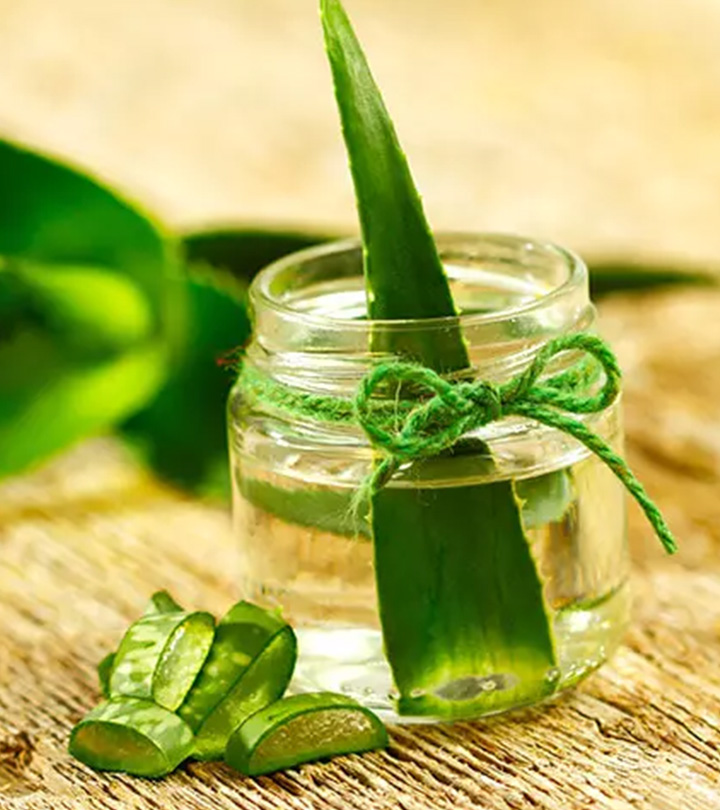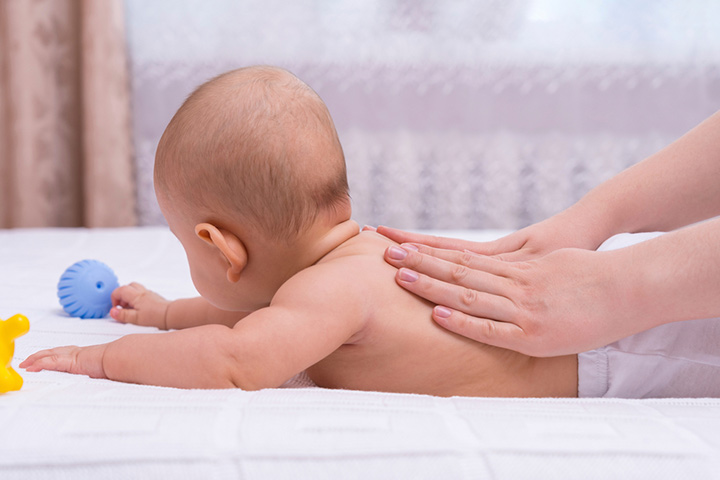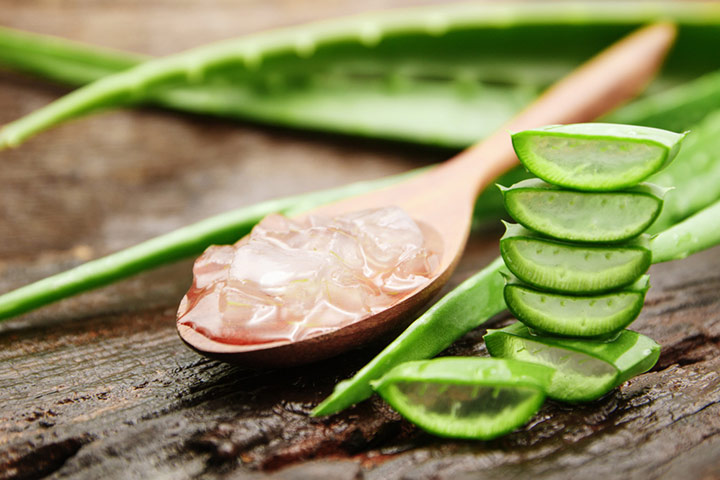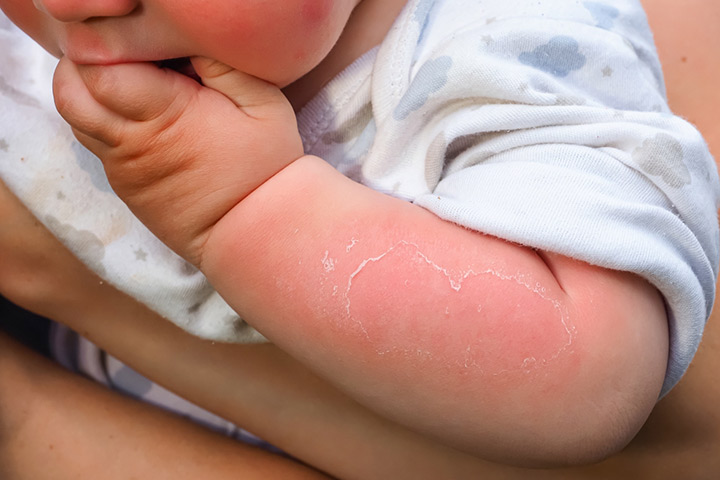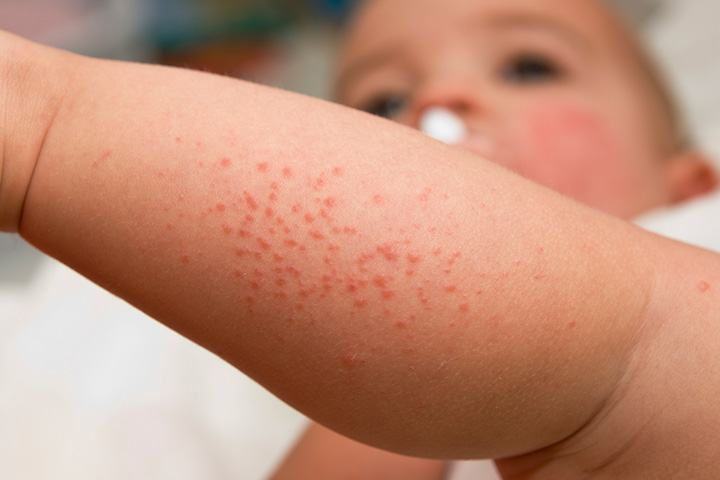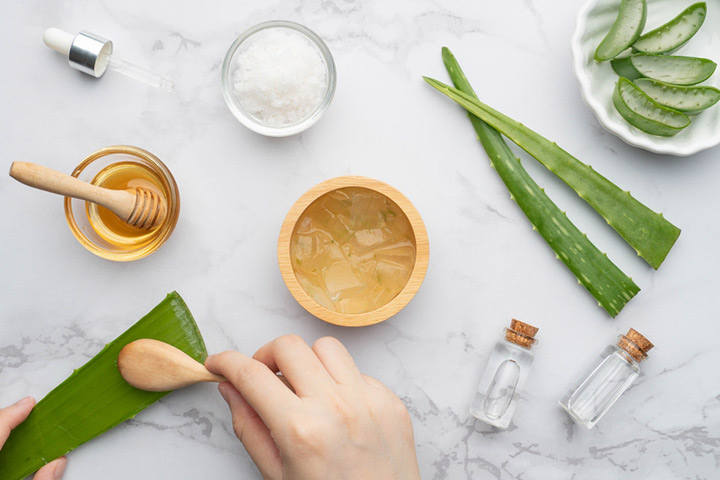For centuries, people have been using aloe vera for beauty, health, skincare, and medicinal purposes (1). However, the growing popularity of the plant has made parents curious to know about the benefits of aloe vera for babies. Recent research also shows that aloe vera has healing properties and therapeutic effects on peptic ulcersiXAn open sore on the surface of an organ or a tissue when surface cells die and shed due to infection, digestive or hormone problems, burns, arthritisiXA bone disorder caused due to reduced bone density leading to inflammation, stiffness, and pain in joints, goutiXA type of arthritis caused by increased uric acid in the body leading to pain and swelling of usually one joint at a time, others (2).
Aloe vera is generally considered safe for babies if it is applied topically. This is because the active ingredients provide them with several health benefits. However, it would help if you still exercise caution because some babies may develop side effects, such as allergies.
Read the post to understand the benefits of aloe vera on babies, its possible side effects, and precautions.
Aloe Vera: What Does It Contain?
The leaves of the aloe vera plant are known for their health and medicinal benefits. There are two significant components of aloe vera leaf – its green outer skin and the inner gel-like pulp. The clear inner gel is mostly used for topical applications, while aloe vera juice is made by crushing or grinding the entire leaf of the aloe vera plant, followed by various steps to purify and filter the liquid (3).
The juice contains a bioactive compound anthraquinone and has laxative effects (4). The pulp has 96% water, 73.35% dietary fiber, and bioactive compounds such as flavonoids, enzymes, minerals, and vitamins that hold potential health benefits (5).
For babies, the topical application of aloe vera gel is more prevalent and preferred than the oral consumption of the juice.
Is Aloe Vera Safe For Babies?
The topical use of aloe vera is generally considered safe for babies. The US National Center for Complementary and Integrative Health states that the topical use of aloe vera gel is safe in general (6). The use of aloe vera in babies has no clear clinical indication, yet it can be used for infant skincare and haircare.
Is Aloe Vera Safe For Babies To Eat?
Aloe vera latex or juice is commonly recommended as a traditional remedy for constipation and low immunity in children. However, there are no clinical guidelines for the oral use of aloe vera in babies. Although studies indicate aloe vera is not toxic when consumed, it’s not advisable for children under 12. Research suggests oral consumption may lead to abdominal cramps, diarrhea, hypersensitivity reactions, hypokalemia, pseudo melanosis coli, and kidney failure. While some babies may not exhibit these reactions, exceptional cases exist. Therefore, parents should only administer aloe vera under a doctor’s advice or clinical supervision (7) (8) (9).
The US Food and Drug Administration approves aloe vera as a food additive for flavor in commercial products. Some of these products can be given to babies as well. However, the FDA does not guarantee the strength, purity, and safety of these products (3).
Safe Uses Of Fresh Aloe Vera Gel For Babies
Fresh aloe gel prepared at home can be used for babies in various ways, such as the following:
- Aloe vera is often considered a natural or organic moisturizer. Massaging babies a couple of times a day with aloe vera gel helps keep your baby’s skin hydrated and supple. Avoid applying the gel on the face since it may lead to accidental ingestion .
- For hair care, aloe vera gel may be massaged on the baby’s hair and scalp; however, its effectiveness is not well-researched.
Possible Health Benefits Of Aloe Vera For Babies
Aloe vera contains 200 bioactive constituents, such as enzymes, lignin, saponins, salicylic acids, and amino acids. These active compounds can be beneficial to the baby (10).
- Skincare: Aloe gel contains mucopolysaccharides, which on topical use, aid in moisturizing the skin, thus keeping it soft and elastic. The zinc present in the gel works as an astringent, which helps tighten the skin pores. Thus, under pediatric guidance, aloe gel can be used topically to treat specific skin issues (1).
- Haircare: Aloe vera gel or juice has been traditionally used for haircare. A review study published in the Journal of Chemical and Pharmaceutical Research showed that aloe vera gel could protect against hair loss, reduce dandruff, and can possibly help in hair regrowth as well (11) (12).
Cina is a mother and YouTuber who has been using aloe vera for her baby’s hair since she was six months old. Sharing her experience, she says, “Aloe contains several nutrients that can help keep your baby’s hair healthy. However, removing Aloin from the aloe plant before applying it to the hair is vital to avoid allergic reactions…There’s no right or wrong way to apply aloe. I always apply it to Emma’s hair before washing it. During application, I massage the gel on her scalp. Applying the gel to hair can be tedious due to its gooey texture. So, you may blend it to make its application easier (i).”
- Antioxidant properties: The antioxidant properties of aloe vera could be useful in counteracting free radical damage within the body. More recently, an anti-inflammatory agent has been isolated from aloe gel. The other bioactive components, such as vitamin E, C, and some minerals present in the gel, also play a role in imparting antioxidant effects (1).
- Antimicrobial and antiseptic activity: The aloe protein and salicylic acid found in the aloe vera gel exhibit antifungal, antiseptic, and antibacterial properties (1). Research also suggests that the gel can exhibit antiviral properties to some extent due to the presence of anthraquinone compounds (13).
- Healing burn injuries: The US Food and Drug Administration has approved the use of aloe vera ointment as an over-the-counter medication for healing skin burns (10). On topical use, aloe gel is considered to increase the collageniXA structural protein of the body that helps build the connective tissue, skin, bones, and tendons and provides flexibilityproduction around the wound and thus support wound healing. Controlled clinical trials have found that aloe vera gel might aid in the natural healing of first, and second-degree burns (13).
- Wound healing: The topical application of aloe vera as a wound cover could keep the wound area moist. This allows the optimal migration of fibroblasts to the wound, thus leading to improved wound healing. Studies have indicated the effectiveness of the topical use of aloe vera gel in enhancing dermal injuries such as surgical wounds, frostbites, and skin infections (14).
- Possible prevention of ulcers: The topical use of aloe vera has demonstrated its effectiveness in preventing ulcers due to the presence of mucopolysaccharides, amino acids, zinc, and water in it (15).
- Relief from pain: The active organic ingredients in aloe vera such as anthraquinones, salicylic acid, carotenoids, terpenes, and phytosterols are known for their anti-inflammatory properties (15). On topical application, aloe vera penetrates the skin and helps in reducing pain caused by injuries (11). Aloe vera creams are known to provide soothing relief from pain caused by mild sunburn (16).
Aloe vera has several other benefits beyond those mentioned above. However, there could be some possible side-effects too.
Possible Side-Effects Of Aloe Vera In Babies
Natural remedies do not necessarily equate to “safe.” The major side-effect is the risk of allergic reactions (17)
- The topical and oral use of aloe gel can cause allergic reactions to those who are allergic to other plants in the lily family, such as onion and tulips. This type of allergic reaction is known as cross-reactivity.
- The probable signs and symptoms to watch are redness, burning sensation, skin irritation, hives, cramping, and diarrhea, and rarely dermatitisiXSkin inflammation or irritation caused by infections, genetics, or reaction to an allergic substance.
If your baby has any existing allergies, then consult a pediatrician before using aloe vera.
Things To Remember While Using Aloe Vera For Babies
Take the following precautions while using aloe vera for babies.
- Purgative effects: Oral consumption of aloe vera juice has shown purgative (laxative) effects to the presence of a compound called aloin. Hence, never use aloe vera juice for your baby orally, unless done under pediatric guidance.
- Aloe vera gel for face: Aloe vera gel application on the face must be avoided since it might cause accidental ingestion, which may lead to abdominal cramps and diarrhea. Freshly extracted aloe vera juice could also be bitter and thus distasteful.
- Buy organic: Purchase commercial aloe vera products only from trusted sources. Also, prefer organic aloe vera products that have detailed information about ingredients and provide an expiry or “use by” date.
- Patch test to check allergy: Try the gel on a small part of the skin, like the one under the feet, before using it for the first time on the body. A patch test helps one know about any allergies. If there are no signs of allergy, you can start using it.
How To Prepare Aloe Vera Gel For Babies?
Aloe vera is often available commercially in various forms like powder, gel, juice, and capsules. These products cannot be used for babies without pediatric guidance since the FDA does not regulate them. However, some parents prefer making gel at home. Here is how you can make aloe vera gel.
- Pluck a leaf from aloe vera plant and wash it with lukewarm water.
- Pat dry the leaf and slit it from the middle to expose the white gel.
- Leave the leaf on a flat surface undisturbed until the bitter yellow juice from the corners of the leaves flows away.
- Once the yellow juice or latex is drained, scoop out the aloe gel using a blunt knife or spoon.
- Store the gel in an air-tight glass container. You can use the gel directly on the skin or in combination with other organic ingredients.
The application of aloe vera for babies is considered safe and beneficial. However, it is not recommended for oral consumption as there is no scientific backing. Aloe vera is a great way to retain moisture on the skin and bring a glow to the baby’s face. It has antioxidant properties and is well-known for its hair care benefits. Moreover, it can relieve body pains due to its anti-inflammatory properties. But before you decide to go ahead with its use, consult your doctor to ensure the quantity that is safe to be applied.
Key Pointers
- Aloe vera is safe for babies and has many benefits for their skin and hair.
- Applying fresh aloe gel on their skin and scalp can relieve pain from burns or injuries.
- Symptoms of an allergic reaction to aloe vera in babies include hives, redness, and burning skin.
- Always conduct a patch test before using aloe vera gel on babies to check for allergic reactions.
